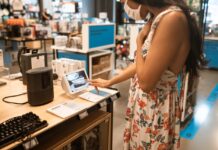Trade shows offer businesses a unique opportunity to connect with prospects face-to-face, showcase products, and build lasting relationships. According to recent data from Operatix, 92% of trade show attendees actively seek new products and solutions, while 70% of businesses successfully generate valuable leads at these events. With the average cost per lead at trade shows running 40% lower than traditional field sales efforts, maximizing return on investment (ROI) becomes a critical focus for marketing teams. A strategic approach combining pre-show planning, onsite execution, and post-event follow-up can transform trade show participation from a significant expense into a powerful revenue driver.
Strategic Pre-Show Planning
The foundation of trade show success starts months before the event. Pre-show planning requires careful attention to multiple elements, from booth design to targeted marketing campaigns. Research shows companies that invest time in pre-show preparation generate up to three times more qualified leads than those who don’t.
Start by defining clear, measurable objectives for the event. These goals should align with broader business objectives and include specific metrics like number of qualified leads, scheduled demonstrations, or signed contracts. Document these goals and share them with all team members involved in the trade show effort.
Next, develop a targeted pre-show marketing campaign. Use the event’s attendee list to identify and reach out to high-value prospects. According to Bizzabo’s research, personalized pre-show outreach can increase booth traffic by up to 50%. Create email sequences that highlight your presence at the show and offer compelling reasons to visit your booth, such as exclusive demonstrations or limited-time promotions.
Booth design plays a crucial role in attracting attention. Work with experienced designers to create a space that reflects your brand identity while incorporating interactive elements. Consider factors like traffic flow, product demonstration areas, and private meeting spaces. Research from Exponents shows that booths with clear messaging visible from 20 feet away attract 25% more visitors.
Staff training represents another critical pre-show component. Every team member should understand their role, know the qualifying criteria for leads, and be prepared to deliver consistent messaging. Schedule training sessions to practice common scenarios and ensure everyone can effectively operate lead capture tools.
Creating Engaging Booth Experiences
Once the show begins, your booth becomes your command center for generating ROI. The key to success lies in creating memorable experiences that convert casual visitors into qualified leads. According to AlphaGraphics, interactive booth elements can increase engagement time by up to 300%.
Start with a welcoming atmosphere. Position staff strategically – some team members should stand at the booth’s edge to engage passing traffic, while others manage demonstrations or conduct detailed conversations. Avoid common mistakes like clustering together or focusing on phones instead of attendees.
Product demonstrations should be concise and impactful. Rather than covering every feature, focus on solving specific pain points relevant to your target audience. Use real-world examples and case studies to illustrate value. Consider offering hands-on experiences where appropriate – research shows that physical interaction with products increases memory retention by 40%.
Implement a mix of digital and analog engagement tools. While touchscreens and virtual reality experiences can draw attention, traditional tools like prize wheels or contests often prove equally effective at starting conversations. The key is ensuring every interactive element serves a strategic purpose in moving prospects through your sales funnel.
Lead Capture and Qualification
Effective lead management during the show directly impacts post-event ROI. Implement a systematic approach to capturing and qualifying leads that goes beyond collecting business cards. Modern lead capture systems can integrate directly with your CRM, enabling real-time lead scoring and follow-up task assignment.
Train staff to ask qualifying questions naturally during conversations. Document key information like budget authority, timeline, and specific needs. This data proves invaluable during post-show follow-up. According to Operatix, leads followed up within 48 hours are 7 times more likely to result in meaningful conversations.
Use technology to streamline the process. QR codes can quickly share digital materials, reducing printed collateral costs while providing trackable engagement metrics. Mobile apps can scan badges and automatically populate lead records with attendee information, saving time and reducing errors.
Post-Show Follow-Up Strategies
The days immediately following a trade show are critical for maintaining momentum. Develop a structured follow-up plan that prioritizes leads based on qualification criteria and expressed interest level. Research from Bizzabo indicates that 80% of trade show leads never receive follow-up, representing a significant missed opportunity.
Begin with personalized thank-you messages referencing specific conversations or demonstrations from the show. Include relevant additional information or resources discussed during the interaction. For hot leads, schedule follow-up calls or demonstrations within the first week post-show.
Create targeted content streams based on interests expressed during the show. This might include case studies, product specifications, or educational materials addressing common pain points. Track engagement with these materials to further qualify leads and inform sales approaches.
Measuring and Analyzing ROI
Accurate measurement of trade show ROI requires tracking both direct and indirect benefits. Calculate basic metrics like cost per lead and cost per acquisition, but also consider longer-term impacts on brand awareness and market positioning.
Track leads through your sales pipeline, noting conversion rates at each stage. Compare these metrics to other marketing channels to understand relative effectiveness. Document successful deals that originated from the show, including total contract value and time to close.
Use surveys to gather qualitative feedback from both attendees and staff. This information can help identify areas for improvement in future shows and provide insights into the effectiveness of different booth elements or engagement strategies.
Conclusion
Maximizing trade show ROI requires a comprehensive approach spanning pre-show planning through post-event analysis. Success depends on setting clear objectives, creating engaging experiences, capturing and qualifying leads effectively, and executing thorough follow-up campaigns. By implementing these strategies and continuously measuring results, organizations can significantly improve their return on trade show investments.
To get started, audit your current trade show processes against the best practices outlined above. Identify gaps in your approach and prioritize improvements based on potential impact. Remember that small changes in areas like pre-show outreach or follow-up timing can dramatically affect overall results. With careful planning and execution, trade shows can become one of your most effective marketing channels.



